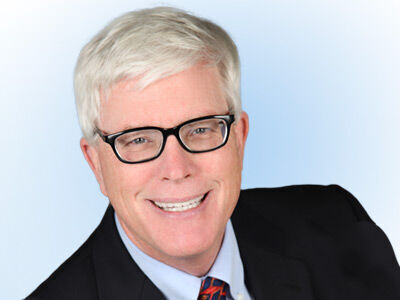How friends in South Carolina are restoring a wetland and bringing their neighborhood together
News > National News

Audio By Carbonatix
9:10 AM on Friday, November 7
By MICHAEL PHILLIS and JOSHUA A. BICKEL
CHARLESTON, S.C. (AP) — As the October night deepened and her bedtime approached, Joel Caldwell's 4-year-old daughter huddled with her dad, dangling a stick she pretended was a fishing pole over a creek that has become Caldwell's passion project for nearly the entirety of his daughter's life.
“I want my children to grow up with a relationship to the natural world,” said Caldwell. “But we live in a neighborhood, so how do you do that?”
The answer Caldwell and two of his friends came to was improving the creek that snakes into their section of Charleston — preserving its tidal flow, expanding its reach and rewilding its edges. This wetland is a transition zone where the land meets the bigger river. Their work here is small in scale and local, but it is tangible and has built a community at a time when it has gotten easier to destroy such places.
With fewer wetlands there are fewer fish, fewer plants, fewer insects and birds, dirtier water and less protection against floods. That flooding is a special concern in hurricane-prone Charleston. Storm threats are compounded further by sea rise, which is being driven by climate change. The trio's restoration work fits into a growing public appreciation over the last 10 to 15 years for how wetlands help absorb floodwater.
“We can be paralyzed by the bad news that we are fed every day, or we can work within our local communities and engage with people and actually do things,” Caldwell said.
Caldwell has traveled the world as a freelance photographer. Then the COVID-19 virus hit right around the time his wife gave birth to their first daughter. From that stuck-in-place isolation, he and two friends, who were also having their first children at the time, founded The Marsh Appreciation and Restoration Society for Happiness Project, or The MARSH Project.
Halsey Creek is mere blocks from Caldwell's house. The tidal salt marsh extends a few thousand feet from the Ashley River, one of three rivers that meet at Charleston, flowing between blocks of single-family homes many squeezed on one-tenth-of-an-acre lots.
Neglected and abused in its urban setting, their first project was a community trash pickup on a hot day. They expected maybe a dozen people but ended up with 50, thanks to advertising by cofounder Blake Suárez, a graphic designer. Caldwell said people were clearly hungry to connect with their local environment.
Over the years, they’ve pulled tires, radios, televisions, “generations of garbage” and even brought over winches to remove a car engine from the marsh.
Americans historically viewed wetlands like these as impediments to progress, better drained, filled and built on than saved. As a result, there’s far less of them and their decline has accelerated in recent years, according to a 2024 U.S. Fish and Wildlife Service report. Plus, two years ago, the Supreme Court, in Sackett v Environmental Protection Agency, weakened modern Clean Water Act wetlands protections, a rollback the Trump administration is likely to expand upon.
“It is going to be even harder to protect those wetlands that are left because the best tool we had to protect those wetlands, the federal Clean Water Act, is really being gutted,” said Mark Sabath, an attorney with the nonprofit Southern Environmental Law Center.
The wetlands around Charleston support oyster beds that filter water and cling to long, wooden piers that stretch over shallow water and into the Ashley River. Kingfishers and egrets fly between the cordgrass. It's a humid, sticky place during blazing summers in the South. A vein of the river becomes Halsey Creek, shooting into the Wagner Terrace neighborhood, a suburban area north of Charleston's historic downtown.
Waves of communities called it home after World War II: it was predominantly Jewish along with Greek and Italian immigrants in the decades following the war, shifting to African American in the 1960s and 1970s. Today, gentrification has created a mostly white community of more expensive homes.
To help protect the wetlands, The MARSH Project's first significant conservation step was buying an acre of land from a local landowner.
That acre is not obviously remarkable, running along a sloped strip that hugs the water, a runway of backyard grass on one side and bushes crowding the other. But the purchase ensures it will stay wetlands, not become new houses.
“With the state of the world, and maybe my own sort of inclination, I’m not, like, naturally a happy person. So, this is like my form of therapy,” said co-founder Blake Scott, a historian who can recite the marsh’s role in Charleston dating back to when the British staged a nearby siege during the Revolutionary War.
“The marsh makes me happy.”
Private homes abut the creek, so Scott has become its neighborhood salesperson. Out on a recent day, Scott spotted Jill Rowley, who lives near the end of the creek. He pointed to bare soil in the yard, explaining it would be an ideal spot for native plants to cleanse and slow rushing water, offering an expert’s gardening advice and possibly funding.
“I never had an interest in the marsh or native (plants),” Rowley said. “And seeing this, and what is going on here, and really feeling like a steward and learning … I’ve just fallen in love with it.”
Rowley can see what Scott is describing by looking across the street at one of their demonstration gardens. This is not a place for evenly spaced flowers surrounded by freshly cut grass. It’s a wilder mass of plants, with tall bending golden rod and Elliott’s aster that sprout purple flowers to attract pollinators deep in the fall. Native plants like these helped increase the bugs for the kids’ moth night that brought Caldwell's daughter, Land, to the creek that October night with her dad. The founders see events like this as one way of ensuring the next generation appreciates the importance of the ecosystem.
Scott believes wetlands and wildlife could improve the neighborhood. For part of its length, the creek meanders and absorbs the tide, but a bisecting street constrains flow to its back half. Here it struggles to turn and expand. Nearby blocks flood easily into a suburban lake that can rise to a tall man’s waste. He wants to install better drains and a tidal gate to help the marsh absorb millions of additional gallons of that floodwater.
The reaction from neighbors has been mostly, but not universally, positive, Scott said – a limited few resists public access near their property or picking up trash.
The trio of founders are now starting to look outside of their neighborhood to create a corridor of native plants and trees to connect wildlife across the city’s few remaining creeks. It builds on four years of hosting public lectures, trash pickups, planting pollinator gardens, bringing in students for water quality testing and many other community events.
Through them, they’ve found success focusing on an issue, and local actions — not broader politics.
“It’s getting as many people as possible to change whatever their little piece of earth is,” Caldwell said. “There is no gesture too small.”
___
The Associated Press receives support from the Walton Family Foundation for coverage of water and environmental policy. The AP is solely responsible for all content. For all of AP’s environmental coverage, visit https://apnews.com/hub/climate-and-environment























